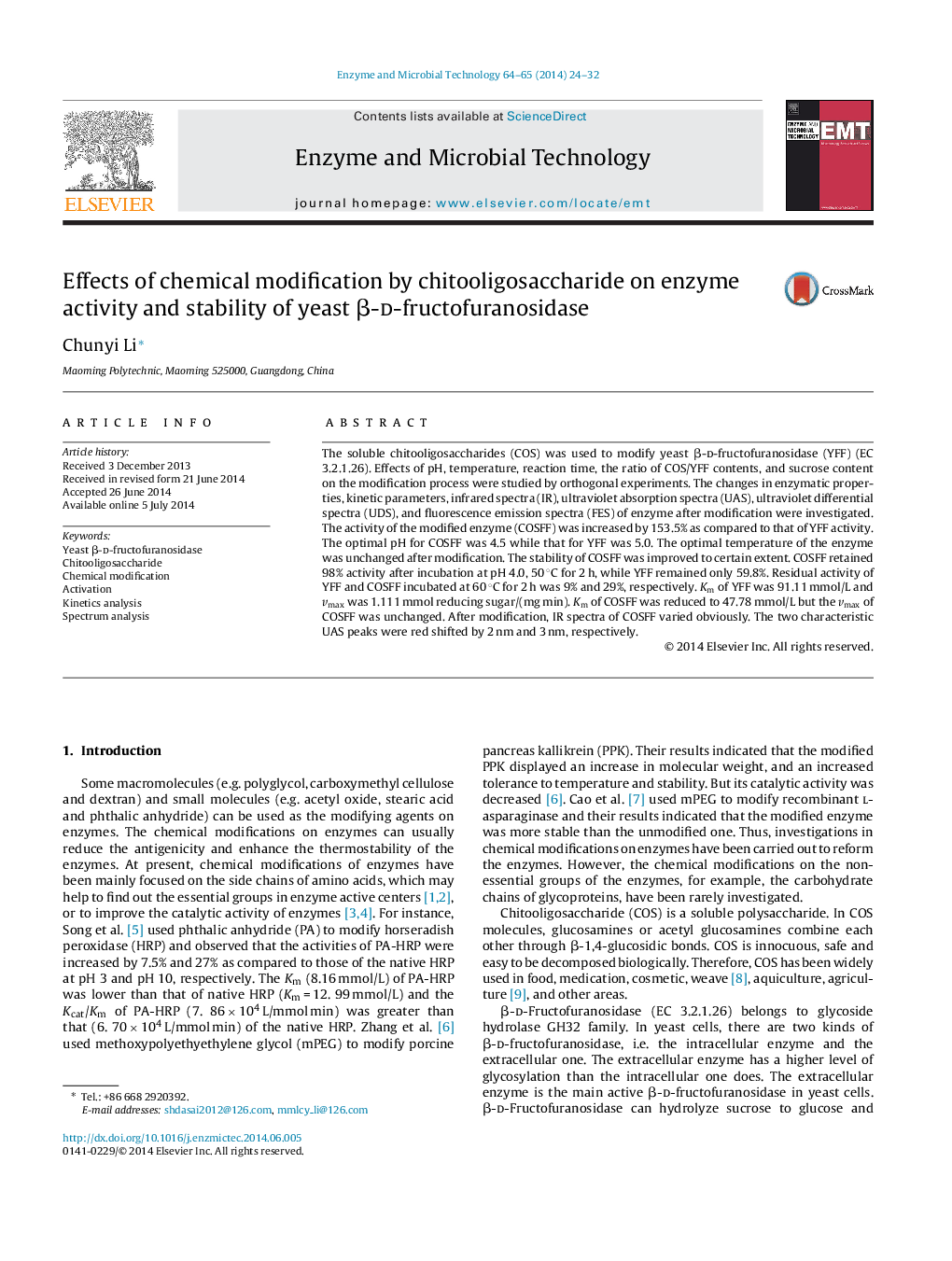| Article ID | Journal | Published Year | Pages | File Type |
|---|---|---|---|---|
| 17001 | Enzyme and Microbial Technology | 2014 | 9 Pages |
•Chitooligosaccharides (COS) was used to modify yeast β-d-fructofuranosidase (YFF).•The activity of YFF increased by 153.5% after modification with COS.•The optimal modification conditions were approached by orthogonal experiments.•Results of SDS-PAGE experiments indicated that COS were really linked to the enzyme.•Kinetics, spectrum properties of enzyme before and after modification were compared.
The soluble chitooligosaccharides (COS) was used to modify yeast β-d-fructofuranosidase (YFF) (EC 3.2.1.26). Effects of pH, temperature, reaction time, the ratio of COS/YFF contents, and sucrose content on the modification process were studied by orthogonal experiments. The changes in enzymatic properties, kinetic parameters, infrared spectra (IR), ultraviolet absorption spectra (UAS), ultraviolet differential spectra (UDS), and fluorescence emission spectra (FES) of enzyme after modification were investigated. The activity of the modified enzyme (COSFF) was increased by 153.5% as compared to that of YFF activity. The optimal pH for COSFF was 4.5 while that for YFF was 5.0. The optimal temperature of the enzyme was unchanged after modification. The stability of COSFF was improved to certain extent. COSFF retained 98% activity after incubation at pH 4.0, 50 °C for 2 h, while YFF remained only 59.8%. Residual activity of YFF and COSFF incubated at 60 °C for 2 h was 9% and 29%, respectively. Km of YFF was 91.11 mmol/L and vmax was 1.111 mmol reducing sugar/(mg min). Km of COSFF was reduced to 47.78 mmol/L but the vmax of COSFF was unchanged. After modification, IR spectra of COSFF varied obviously. The two characteristic UAS peaks were red shifted by 2 nm and 3 nm, respectively.
